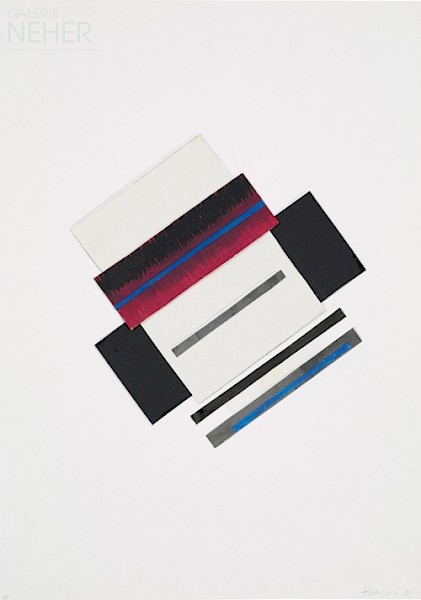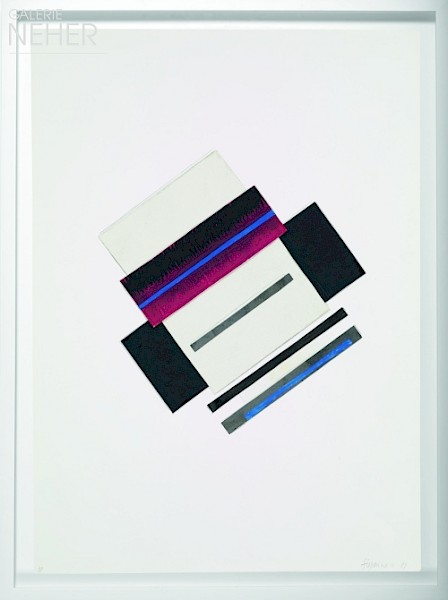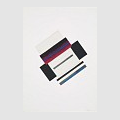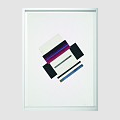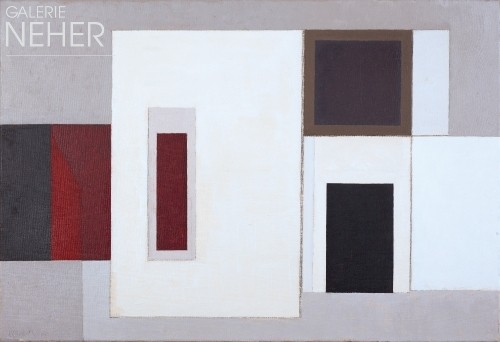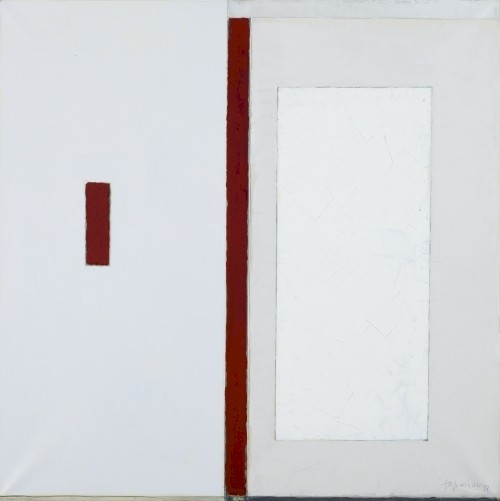Heinrich Siepmann - C17/1989, 1989
Collage, painted corrugated cardboard on cardboard
70 x 50 cm / framed 80 x 60 cm
27 x 19 inch / framed 31 x 23 inch
Labelled bottom left “17”
Signed, dated bottom right “Siepmann 89”
N 9324
2,900 €
Provenance:
Nachlass des Künstlers
Exhibitions:
Essen, Galerie Neher, Essen, Frühjahr 2020, Kunst aus dem 20. Jahrhundert,, Katalog mit farbigen Abbildunge Seite 45
Heinrich Siepmann - C17/1989, 1989
Collage, painted corrugated cardboard on cardboard
70 x 50 cm / framed 80 x 60 cm
27 x 19 inch / framed 31 x 23 inch
Labelled bottom left “17”
Signed, dated bottom right “Siepmann 89”
N 9324
2,900 €
Provenance:
Nachlass des Künstlers
Exhibitions:
Essen, Galerie Neher, Essen, Frühjahr 2020, Kunst aus dem 20. Jahrhundert,, Katalog mit farbigen Abbildunge Seite 45
About the work
Heinrich Siepmann, born in 1904 in Mülheim on the Ruhr, began his artistic work at the Kunstgewerbeschule (school of arts and crafts or of applied arts) in Essen. In his early drawings and watercolours from the 1930s and 1940s, Siepmann’s areas of interest in representational drawing extended from the representational drawing of still lifes and landscapes to architecture and cities. Following surrender, the end of the war and the related cataclysmic destruction of Germany, Siepmann’s artistic path after 1945 also turned in a non-representational direction. Siepmann developed his independent canon of forms from the abstraction of architectures, objects and landscapes.
The painter developed his own artistic signature, full of sensitive colouring, by way of his involvement with structures and their rhythms, such as barred frames. Heinrich Siepmann remained a perpetually exploring and searching artist to the end of his life.
This sheet shows a collage in a dynamic diagonal composition. Various rectangular forms, placed at the centre of the piece, seem to float above the pictorial surface and be in a state of constant rotation. Siepmann repeats the various pictorial elements within the central pictorial body, in this way developing a harmonious composition. While the two largest, black pictorial elements frame the central rectangle on its head sides, it is accompanied by narrow, blue elements on its long sides. The white rectangle in the middle is accentuated by a grey paperboard element that repeats again in somewhat larger dimensions as the basis for the narrow, blue element beneath. Siepmann’s collage demonstrates a composition that is as simple and clear as it is balanced, and which always remains fascinating for the viewer.
(Andrea Fink)
Text authored and provided by Dr Andrea Fink, art historian
The art historian, curator and freelance publicist Andrea Fink studied art history, cultural studies and humanities, modern history and philosophy in Bochum and Vienna. Doctorate in 2007 on the work of the Scottish artist Ian Hamilton Finlay. As a freelance curator and art consultant, her clients include, among others, the Kunstverein (art association) Ahlen, Kunstverein Soest, Wella Museum, Museum am Ostwall Dortmund, ThyssenKrupp AG, Kulturstiftung Ruhr, Osthaus Museum Hagen, Franz Haniel GmbH, Kunsthalle Krems, Austria.
